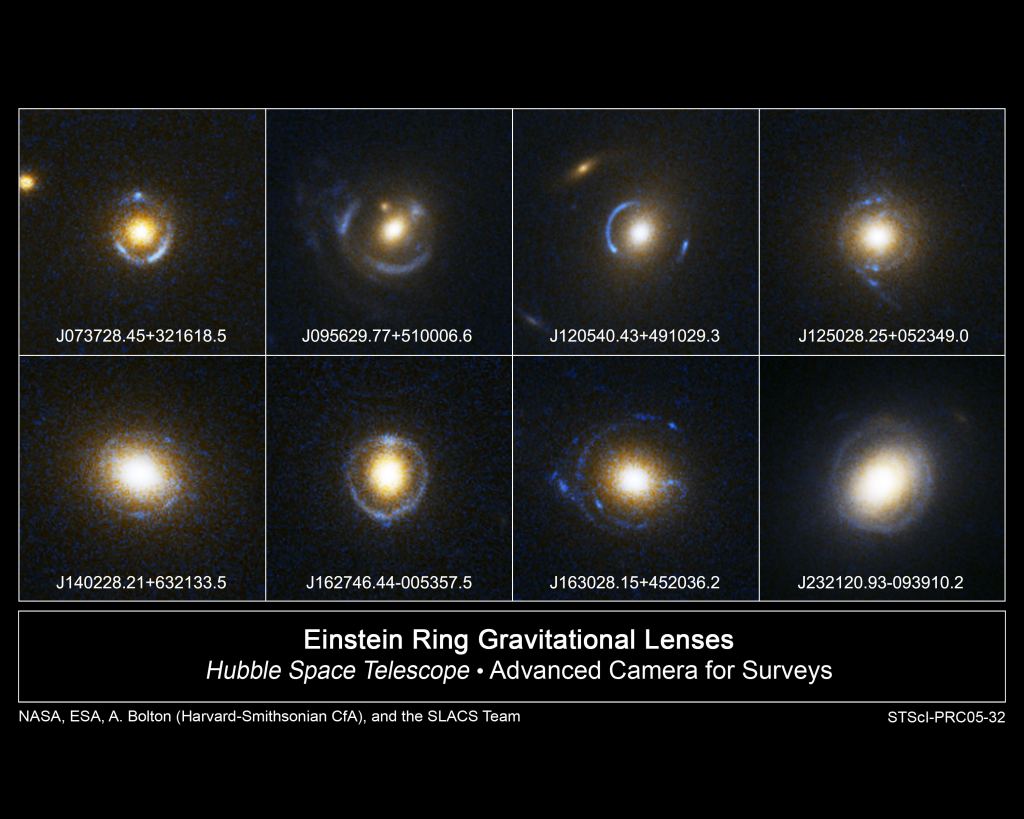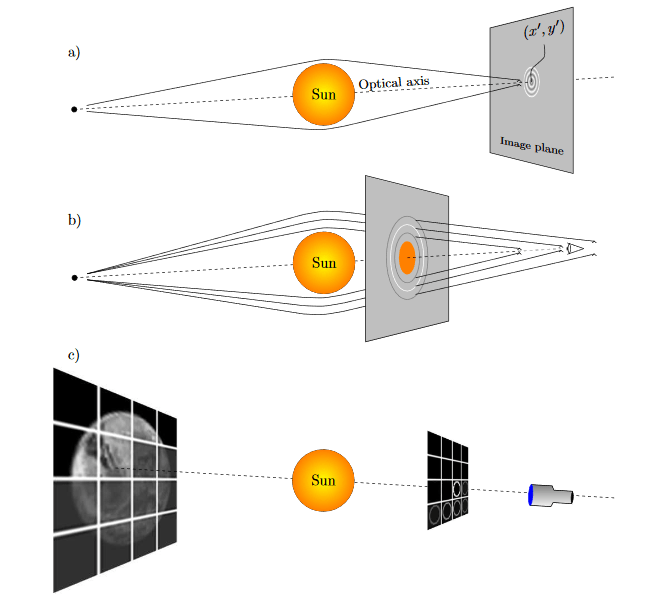As Einstein originally predicted with his General Theory of Relativity, gravity alters the curvature of spacetime. As a consequence, the passage of light changes as it encounters a gravitational field, which is how General Relativity was confirmed! For decades, astronomers have taken advantage of this to conduct Gravitational Lensing (GL) – where a distant source is focused and amplified by a massive object in the foreground.
In a recent study, two theoretical physicists argue that the Sun could be used in the same way to create a Solar Gravitational Lens (SGL). This powerful telescope, they argue, would provide enough light amplification to allow for Direct Imaging studies of nearby exoplanets. This could allow astronomers to determine if planets like Proxima b are potentially-habitable long before we send missions to study them.
The study, which recently appeared online and is being considered for publication in the journal Physical Review D, was conducted by theoretical physicist Viktor Toth and Slava G. Turyshev, a physicist at NASA JPL who was also the Principal Investigator (PI) of the 2020 NIAC Phase III study, titled “Direct Multipixel Imaging and Spectroscopy of an Exoplanet with a Solar Gravitational Lens Mission.”

In addition to enabling all kinds of profound astrophysical research, gravitational lensing has also resulted in some of the most spectacular images of the Universe ever taken. These include what are known as “Einstein Rings,” which is what light from a distant object can sometimes look like once it encounters a gravitational field between it and the observer.
Depending on the alignment between the observer, the source, and the lens, light from the source can also appear as an arc, a cross, or another shape. While any massive body may be used as a gravitational lens, the Sun is in an advantageous position for GL astronomy. For starters, it is the most massive body in the Solar System, making it the most powerful lens available.
Second, the focal region of its lens begins at a distance of ~550 AUs from the Sun, which is a realistic distance for a future mission to reach. The focal region of the next largest object (Jupiter) starts at a distance of over 2,400 AUs. In short, astronomers could engineer a proper alignment with the Sun to create an SGL and use it for astronomical observations – like getting a good look at nearby exoplanets!
Direct Imaging is an especially promising method when it comes to exoplanet characterization, which future exoplanet studies will be focusing on like never before (as opposed to exoplanet detection). By examining light reflected directly from a planet’s atmosphere or surface, astronomers can obtain spectra that indicate what a planet’s atmosphere is composed of and maybe even detect signs of vegetation on the surface.

This method is tricky, however, as current telescopes do not have the resolution necessary to directly image smaller planets that orbit closer to their stars (which is where rocky planets are found). Hence why the vast majority of directly-imaged exoplanets have been gas giants, typically with long-period orbits. As Turyshev told Universe Today via email:
“To directly observe and image an exoplanet we need access to very large telescopes. Thus, if we want to see our own Earth in just one pixel from a distance of 100 light-years, we need a telescope with ~90 kilometers in diameter.
“The next largest telescopes to be built on the ground (European Extremely Large Telescope) and to go to space (James Webb Space Telescope) are 39 meters and 6.5 meters, [respectively]. The concepts that are being considered as a replacement for these magnificent machines (LUVOIR and HabEx) are 16 and/or 24 meters.“
Based on this trend, argues Turyshev, no one who is alive today will see what an alien world looks like up close in their lifetime (nor their children and grandchildren). With an SGL, observations of nearby exoplanets (such as Proxima b and c or the seven rocky planets that orbit TRAPPIST-1) could be made by the middle of this century.

To determine if an SGL is possible, Toth and Turyshev relied on previous studies where they developed a wave-theoretical description for an SGL. In the end, they determined that it was and even simulated what images of Earth with a 1024 x 1024 pixel resolution (shown above) would look like convolved and with Gaussian noise added (left) and after deconvolution took place (right).
This is what Earth would look like if it were the same distance as Proxima Centauri (4.24 light-years) and imaged by a telescope positioned 650 AU from the Sun (and using it as a lens). If you look closely, you can see cloud cover and the contrast between landmasses – in this case, the United States, Baja California, Mexico. Toth and Turyshev estimate that the total exposure time necessary for this amount of detail would be about one year.
Of course, the team also identified several challenges that would need to be overcome first. Distance to the focal region is the most significant issue, which is located roughly 82.28 billion km (51 billion mi) from Earth. That’s about four times the distance between Earth and the Voyager 1 probe, which holds the record for being the farthest mission has ever traveled – 150 AU (22.44 billion km; 13.94 billion mi) as of 2020.
Second, they found that the lens would suffer from spherical aberrations and astigmatism that would need to be corrected for. Last, the Sun’s intense brightness would naturally overpower any light obtained from distant objects. Said Toth:
“[T]he observations necessarily take a long time (the telescope sees one “pixel” at a time as it traverses a kilometer-wide image plane in the focal region, and for each pixel, enough data must be collected to mitigate the effects of noise, mostly from the solar corona) during which a) the telescope’s motion relative to the image must be known accurately, and b) the targeted exoplanet itself may move, change in appearance (clouds, vegetation, etc.) and in illumination. Some of these issues can be treated as noise, some can be removed by a clever image reconstruction strategy.”

Luckily, there are a few potential solutions that Toth and Turyshev recommend. For instance, their conceptual study calls for the use of a telescope with a 1-meter (3.3 ft) primary mirror, though a 2 to 2.5 m (6.5 to 8 ft) telescope could be possible too. This could be achieved, they argue, by sending a small fleet of imaging spacecraft that could combine their resolution to correct for aberrations.
In order to deal with the interference from the Sun, an appropriately-constructed coronagraph will also need to be developed. Luckily, Toth and Turyshev estimate that given the Sun’s focal length, a coronagraph that is also around 1 m in diameter will suffice. Much like the technology for a constellation of small spacecraft that combine to create a space telescope, this will have to await future developments.
But the payoffs, which would include resolved images of potentially-habitable planets, would be immeasurable! Imagine being able to take pictures of Proxima b that will show the size and shape of its continents look like next to its vast oceans (assuming it has either). And how awesome would it be to take images of Proxima c, a gas giant that is believed to have a system of rings like Saturn?
There are also the three planets that orbit within TRAPPIST-1’s habitable zone, all of which could have vast oceans on their surface. There’s also the extremely valuable scientific data we’d stand to gain, which includes spectroscopy that could reveal whether or not the atmospheres of nearby exoplanets contains the chemical signatures we associate with life (aka. “biosignatures”).
Having a dedicated SGL telescope would also be a fitting addition to the many next-generation telescopes that will become operational in the coming years. These include missions like the James Webb (JWST) and Nancy Grace Roman Space Telescope, which will build on the accomplishments of Hubble and Kepler by finding thousands of more exoplanets in nearby star systems.
Similarly, ground-based telescopes with adaptive optics and coronagraphs – like the ESO’s Extremely Large Telescope (ELT) and the Giant Magellan Telescope (GMT) – will allow for Direct Imaging studies of smaller, rocky planets that orbit more closely to their stars. Particularly around dimmer M-type (red dwarf) stars, this is where candidates for habitable planets are expected to be found the most.
In the end, there’s little doubt that an SGL would be a worthy investment as we enter a new age of astronomy and astrobiology that looks beyond exoplanet discovery to focus on characterization and the search for extraterrestrial life! As Turyshev summarized:
“In the next 10-15 years we will discover thousands of new exoplanets by using indirect methods (transit spectroscopy, radial velocity, astrometry, microlensing, etc.). Once we have a set of exciting targets, SGL will help us to study them. We could launch a mission towards the focal region of the SGL for a particular target and study this pre-selected target or target system.
Be sure to check out this video that explains the concept of a Solar Gravitational Lens and how it could revolutionize astronomy as we know it (courtesy of former NASA astronomer Christian Ready and Launch Pad Astronomy):
Further Reading: arXiv
